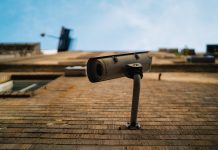The University of East Anglia is taking a low-cost approach to its efficiency and effectiveness programme, which is being delivered by a small team. Ian Powling meets four members of this team to discover their progress in realising the programme.
When the University of East Anglia (UEA) set up Creating Headroom, their efficiency and effectiveness programme, the work of universities such as Cardiff and Saint Andrews in conducting Lean projects was a source of inspiration.
But Professor Ian Harvey says the university was not in a position to put in “as much muscle as some other institutions have done”.
Instead, the Norwich-based institution is taking a low-cost approach in-keeping with their ‘lean’ approach to management and governance.
The institution operates with an executive team of eight. The Creating Headroom programme team comprises three managers, with two – Harvey and his colleague Dr Jon Sharp – also having managerial responsibilities in academic areas. As Harvey notes, “at a middle management level, it can be hard work”.
The big challenge
The big challenge for the Creating Headroom programme is to renovate, maintain and upgrade UEA’s estate. The campus encompasses a portfolio of architect-designed buildings, some of which are listed. Many of these iconic buildings date from the 1960s and are now in need of repair and upgrade. With a budget set at £150m, the university is currently spending some £6m per year although this rate of spend is likely to increase.
They began the project by forming a committee; Harvey considered it useful to include sceptics as well as supporters in the mix. Well aware of the cultural challenge in bringing university staff along with a project of this kind, he stresses that they are seeking to do more than simply find opportunities to cut costs.
The team have encouraged staff to think creatively and identify activities that could generate income as well as reduce costs. This has stimulated some suggestions from staff for operational smarter working.
There was a recognition that describing the benefits of using centralised services and procurement framework agreements is useful. One example was that when staff book travel via the contracted travel agent, they can track where all staff are travelling or planning to travel at any time in the world. This could be a real benefit in the case of emergency or identifying where staff could take marketing collateral on their travels.
Activities at UEA
The team at UEA was also pleased to share an update on their activities.
Procurement
UEA is a member of SUPC and has progressed by using its procurement maturity assessment, starting from a low base. They encourage staff to use framework agreements and are running a survey of printers and paper with a view to developing a print management strategy.
A new waste contract will see projected savings of £320,000 and a review of their telecommunications contract is projected to yield savings of £15,000 per year. There could be potential for doing more work with the Higher Education Procurement Academy to develop procurement competencies.
Transparency
The team is aware of the value of measuring savings and is conducting a pilot project to log procurement. It also wants to encourage centres and schools to declare when savings are made so that they can be pooled to benefit the institution as a whole. As procurement manager Robert Dumolo says, “make transactions visible – then you can talk about them”.
Local networks
UEA works with a range of local networks to explore opportunities for procurement efficiencies. The team is interested in working with Crown Commercial Services which is based in Norwich and has considerable experience in local government collaborative procurement. The team also collaborate with Norfolk County Council and the Norfolk county procurement forum.
Harvey is on the board of his local NHS trust. He says that in his experience, efficiency awareness and practice is far more embedded in the NHS system, and says that there could be scope to transfer learning to his own institution.
Estates management
An independent report on the estates department in January 2015 recommended enhancing the university’s approach to metrics and transparency about costs, especially in relation to new building. The recent Blackdale residences project was highlighted as an example of improved commissioning in the light of the report and a pilot project to outsource facilities management for two buildings is being evaluated.
Sharing best practice
Procurement intern Michael Howes has been brought in to boost the efficiency effort at UEA, and is developing an internal website to make efficiency resources and updates available, including procurement guidance and frameworks. Howes does not underestimate the challenge of discovering and sharing good practice, saying that efficient practice can sometimes be occurring in different parts of the organisation and there should be a central platform dedicated to making these known. He hopes the new website will play an important role in promoting good practice.
Sustainability
While taking into account sustainable and ethical sourcing issues, Harvey is pragmatic and seeks to “balance the head and the heart” when making procurement decisions. Harvey is on the university’s sustainability board and points out that student board members can be a useful source of ideas. He will be talking to the student union soon about a campaign to turn lights off when not needed.
The Efficiency Exchange hopes to continue the conversation with the team at UEA and share further updates from the creating headroom initiative.








